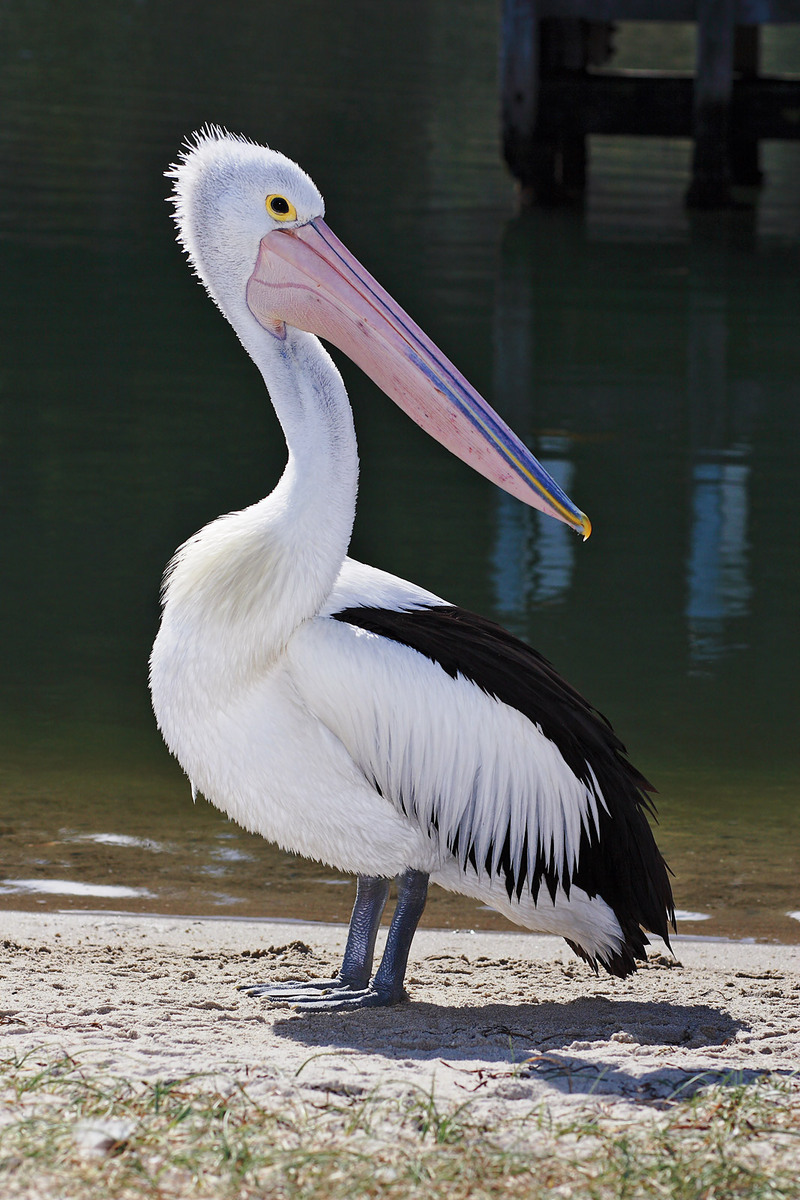Australian Pelican (Pelecanus conspicillatus) - Wiki Australian Pelican
From Wikipedia, the free encyclopedia
[Photo] Australian Pelican (Pelecanus conspicillatus), Lakes Entrance, Victoria, Australia. Photo by http://en.wikipedia.org/wiki/User:Fir0002
The Australian Pelican, Pelecanus conspicillatus also known as Goolayyalibee is an unmistakable large water bird, widespread on the inland and coastal waters of Australia and New Guinea, also in Fiji, parts of Indonesia and as a vagrant to New Zealand.
Australian Pelicans are medium-sized by pelican standards: 1.6 to 1.8 metres long with a wingspan of 2.3 to 2.5 metres and weighing between 4 and almost 7 kilograms. They are predominantly white, with black and white wings and a pale, pinkish bill which, like that of all pelicans, is enormous???particularly in the male.
Australian Pelicans prefer large expanses of open water without too much aquatic vegetation. The surrounding environment is unimportant: it can be forest, grassland, desert, estuarine mudflats, an ornamental city park, or industrial wasteland, provided only that there is open water able to support a sufficient supply of fish.
Australian Pelicans follow no particular schedule of regular movement, simply following the availability of food supplies. When the normally barren Lake Eyre filled during 1974 to '76, for example, only a handful of pelicans remained around the coastal cities: when the great inland lakes dried again, the population dispersed once more, flocks of thousands being seen on the northern coasts and some individuals reaching Christmas Island, Palau and New Zealand.
The species became first known to occur in New Zealand from a specimen shot at Jerusalem in 1890 and small numbers of subfossil bones, the first found at Lake Grassmere in 1947, followed by records of other stray individuals. The bones were later described as a new (sub)species, Pelecanus (conspicillatus) novaezealandiae (Scarlett, 1966: "New Zealand Pelican") as they appeared to be larger, but Worthy (1998), reviewing new material, determined that they were not separable from the Australian population.
Widespread throughout its large range, the Australian Pelican is evaluated as Least Concern on the IUCN Red List of Threatened Species.
http://en.wikipedia.org/wiki/Australian_Pelican
| The text in this page is based on the copyrighted Wikipedia article shown in above URL. It is used under the GNU Free Documentation License. You may redistribute it, verbatim or modified, providing that you comply with the terms of the GFDL. |
